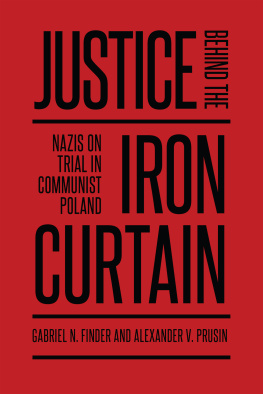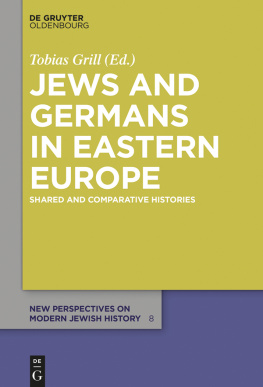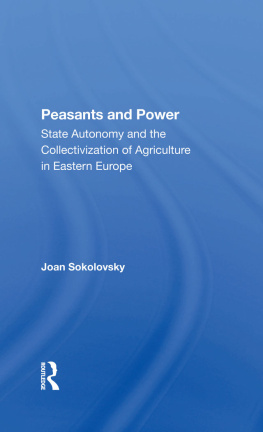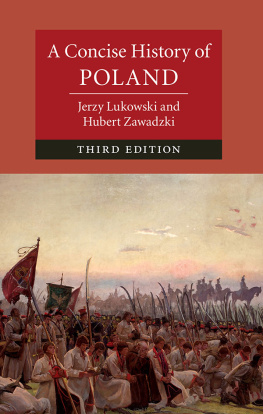This book is a publication of
Indiana University Press
Office of Scholarly Publishing
Herman B Wells Library 350
1320 East 10th Street
Bloomington, Indiana 47405 USA
iupress.indiana.edu
2017 by Edyta Materka
All rights reserved
No part of this book may be reproduced or utilized in any form or by any means, electronic or mechanical, including photocopying and recording, or by any information storage and retrieval system, without permission in writing from the publisher. The Association of American University Presses Resolution on Permissions constitutes the only exception to this prohibition.
The paper used in this publication meets the minimum requirements of the American National Standard for Information SciencesPermanence of Paper for Printed Library Materials, ANSI Z39.48-1992.
Manufactured in the United States of America
Cataloging information is available from the Library of Congress.
ISBN 978-0-253-02887-7 (cloth)
ISBN 978-0-253-02896-9 (paperback)
ISBN 978-0-253-02909-6 (ebook)
1 2 3 4 5 22 21 20 19 18 17
Acknowledgments
O NE OF THE last memories my father, Czesaw, shared with me was of his lonely childhood growing up in a hay-thatched farmhouse surrounded by a bombarded agrarian landscape on the Polish-German borderlands after World War II. Abandoned by his family who had moved to a nearby city, he lived with his grandparents, who still suffered from illnesses contracted in Nazi concentration camps. He escaped his dystopian reality through the portals of adventure and history books. A week after he passed away, I began my doctoral studies at the London School of Economics and Political Science, where I would embark on a journey back to my village, searching for physical and memory fragments of that past as a means to reconnect with my father. This book is the product of a decade-long ethnographic exploration of the soul; namely, how ordinary people devised extraordinary ways to survive their private and societal dystopias.
Writing a postwar history of colonization on disputed territories is no easy task. I am indebted to those villagers who opened their doors and hearts not only to me but also to the very idea of historical investigation. They remain invisible behind pseudonyms for their own protection. I am deeply indebted to my late maternal grandmother Zofia who was the main gatekeeper during fieldwork, who believed in the project when others chose to forget history, and who always fought for the truth, especially during interviews with former socialist officials and elites. It was her childhood dream to become a geographer and I hope that our historical exploration of these borderlands together gave her some satisfaction of having made a contribution to the field. My mother, Bogusawa, also connected me to her socialist-era networks, helped decipher the archives and interviews, and protected me from those who questioned my allegiances to the borderlands. My sister Magorzata also helped document the German tombstones around the village. This book is the product of an intergenerational effort by village womena demographic that has traditionally been the subject of many academic explorations but has itself been on the sidelines of writing history in a traditionally male-dominated field. Written in between the deaths of Czesaw and Zofia, a chapter in my life when I sought survival strategies to deal with my own dystopia of trauma and loss, this book is now ready to take on a life of its own, and maybe even become a portal to individuals in search of agency or an escape from personal purgatories.
I am also grateful to those scholars who trusted my investigative instincts and recognized the import of writing a history of an invisible practice that could not be easily supported by laws, newspapers, or other conventional resources that bolster narratives in historical ethnography. Sharad Chari of the Department of Geography at University of California, Berkeley, and Gareth A. Jones of the Department of Geography and Environment at the London School of Economics and Political Science have provided years of mentorship and support well beyond the doctoral years. Frances Pine, of the Department of Anthropology at Goldsmiths, University of London, and Keith Halfacree, of the Department of Geography at Swansea University, served on my viva committee and encouraged me to revise my dissertation for publication. Alena Ledeneva, at the University College London School of Slavonic and East European Studies, who trailblazed the study of blat in Russia, reviewed this manuscript and boldly supported it through publication. An anonymous reviewer provided keen and incisive comments that helped me tackle structural issues I had avoided for too long. Editors Raina Nadine Polivka, Janice Frisch, and Jennika Baines at Indiana University Press were my compass in the wilderness of book publishing.
Fieldwork was funded by a full MPhil/PhD scholarship from the London School of Economics and Political Science, a John Coffin Trust Grant from the University of London, and the Polonia Aid Foundation Trust Grant. The writing process was funded by a Dissertation Writing Fellowship in East European Studies from the American Council of Learned Societies and the Harriet Irsay Scholarship from the American Institute of Polish Culture. My first fieldwork trip to Bursztyn in 2006 was funded by the Jerome and Lorraine Aresty Undergraduate Research Scholarship and supported by Gordon Schochet, Frank Popper, and Briavel Holcomb from Rutgers Universitys Edward J. Bloustein School of Planning and Public Policy. All views are my own and do not represent the positions of any of the organizations that provided funding.
I wrote most of this book as a postdoctoral fellow at Harvard Universitys Davis Center for Russian and Eurasian Studies. My brilliant colleagues Elena Ion, Elizabeth Ransome, Daria Bocharnikova, Krista Goff, and Rachel Koroloff provided much-needed collegiality and laughter during this uncertain time. I also benefited from Christina Thompsons book-publishing seminar at Harvard, where I had the fortune of meeting scholars in the same professional stage in life and sharing my work with them. The Harriman Institute and East Central European Center at Columbia University, both the Polish Academy of Social Sciences and Collegium Civitas in Warsaw, and the Center for Place, Culture, and Politics at the City University of New York gave me an academic home during various stages of the writing process. David Harveys weekly seminar at CUNY was intellectually stimulating, for I was in the presence of devastatingly brilliant minds. I also wrote portions of the book as a writer-in-residence at the Milkwood International Residency in the Czech Republic, the Nes Artist Residency in Iceland, and the Vermont Studio Center in the United States. It was at the Vermont Studio Center where I met novelist Kiran Desai, who told me I should become a writer. Her kind words have been my guiding light. During the manuscript revision, the good people at Pennylane Coffee in New York City saved a chair for me at the counter and nourished me with good food, coffee, and company.
A wonderful and talented group of professionals helped me pull the manuscript together. The staff at the National Museum in Warsaw, the Muzuem Ziemi Lubuskiej in Zielona Gra, Archiwum Pastwowe w Koszalinie, the British Library, UCL Library at the School of Slavonic and East European Studies, the Harvard Map Collection, and the Herder Institut all helped me secure my resources and archives for this book. Katherine Faydash and Jay Harward at Newgen North America beautifully polished the manuscript and prepared it for publication. Molly Mullin, anthropologist and editorial consultant, tirelessly edited multiple versions of the manuscript and graciously shared her wisdom. Aliza Krefetz meticulously proofread the manuscript and translated the German terms both in the text and in the archives. I also want to express thanks to Michael Needham, at Humanities First, who edited an earlier version of the introduction; Jim Lance, at Cornell University, who provided valuable feedback on how to restructure the book; Daniel Huffman, at somethingaboutmaps, who patiently worked through many versions of the map; and Alexander Zholkovsky, at the University of Southern California, who allowed me to use his description of the Russian kombinator as dystopias provocateur in the title. This book would have not been possible without the care and support of this entire team who joined me along this quest.










